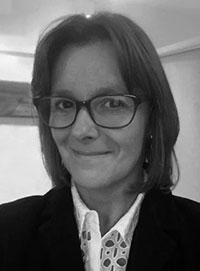 Nawaf A. Nasser. Ottawa-Carleton Geoscience Centre and Department of Earth Sciences, Carleton University, Ottawa K1S 5B6, Canada. nawaf.nasser@carleton.ca
Nawaf A. Nasser. Ottawa-Carleton Geoscience Centre and Department of Earth Sciences, Carleton University, Ottawa K1S 5B6, Canada. nawaf.nasser@carleton.ca
Dr. Nawaf Nasser is a postdoctoral research in the Department of Earth Science at Carleton University. He received a B.Sc. degree in Geology from Kuwait University (minor: marine science), and M.Sc. and Ph.D. degrees in Earth Sciences from Carleton University. Dr. Nasser specializes in environmental biomonitoring with emphasis on using Arcellinida, a group of shelled benthic lake protists, for tracking modern and past environmental change in the quality of terrestrial aquatic sedimentary systems (i.e., lakes) in response to natural (e.g., climate change) and anthropogenic influences (e.g., land-use changes and industrial activities). His current postdoctoral research is focused on the developing a protocol for using End Member Mixing Analysis (EMMA) of lacustrine sedimentary particle size distributions to reconstruct paleoenvironmental and paleoclimatic conditions in lakes.

 Braden R.B. Gregory. Ottawa-Carleton Geoscience Centre and Department of Earth Sciences, Carleton University, Ottawa K1S 5B6, Canada. GregorBRB@gmail.com
Braden R.B. Gregory. Ottawa-Carleton Geoscience Centre and Department of Earth Sciences, Carleton University, Ottawa K1S 5B6, Canada. GregorBRB@gmail.com
Dr. Braden Gregory is a postdoctoral researcher in the Department of Biology at the University of Ottawa, Ontario, Canada. He received a M.Sc. degree in Earth Sciences from McMaster University and a Ph.D. degree in Earth Sciences from Carleton University. Dr. Gregory specializes in paleolimnology with emphasis on employing geochemical, sedimentological, and microfossil proxies to reconstruct paleoenvironmental systems and understanding how contaminants move within these systems in response to anthropogenic, climatological, and geogenic forcing. Dr. Gregory’s current postdoctoral research within the Laboratory for the Analysis of Natural and Synthetic Environmental Toxins (LANSET) of Dr. Jules Blais at the University of Ottawa is aimed at better understanding the impact of Mink farming on the frequency of lacustrine algal blooms in Nova Scotian lakes.

 David Singer. Department of Zoology, Institute of Biosciences, University of São Paulo, São Paulo, Brazil and Ottawa-Carleton Geoscience Centre and Department of Earth Sciences, Carleton University, Ottawa K1S 5B6, Canada. david.singer.bio@outlook.com
David Singer. Department of Zoology, Institute of Biosciences, University of São Paulo, São Paulo, Brazil and Ottawa-Carleton Geoscience Centre and Department of Earth Sciences, Carleton University, Ottawa K1S 5B6, Canada. david.singer.bio@outlook.com
Dr. David Singer is a postdoctoral researcher in the in the LPG-BIAF section at the University of Angers, France. He received his M.Sc. in Biogeoscience and Ph.D. in Biology from the University of Neuchâtel, Switzerland while working in the laboratory of Soil Biodiversity. Dr. Singer is a biologist that specializes in the diversity, the ecology, and the biogeography of microeukaryotes. His past postdoctoral tenures in São Paulo (Brazil), Ottawa (Canada) and Madrid (Spain) led him to learn new approaches to understand microeukaryotic world. His current postdoctoral research at the University of Angers, France is focused on identifying drivers of the spatio-temporal distribution of estuary foraminifera with the objective of developing a foraminifera-based estuary quality index.

 R. Timothy Patterson. Ottawa-Carleton Geoscience Centre and Department of Earth Sciences, Carleton University, Ottawa K1S 5B6, Canada. tim.patterson@carleton.ca
R. Timothy Patterson. Ottawa-Carleton Geoscience Centre and Department of Earth Sciences, Carleton University, Ottawa K1S 5B6, Canada. tim.patterson@carleton.ca
Dr. Tim Patterson is a Professor of Geology at Carleton University in Ottawa, Ontario, Canada. His current research emphasizes a multidisciplinary approach that integrates micropaleontological (e.g., Arcellinida), sedimentological, and geochemical techniques (e.g., ICP-MS, Itrax-XRF) to: 1) study paleoclimate records in Holocene lake, marine, and peatland environments; 2) determine the influence of climate variability on aquatic ecosystems, particularly the link between climate and lake hydroecology; 3) assess the impact of land-use change on lake and coastal-marine ecosystems; 4) evaluate the degree to which remediation efforts are successful in improving aquatic ecosystem services; and 5) reconstruct paleostorm records in lakes using a combination of sedimentological (e.g., high-resolution particle size analysis, end member mixing analysis), and multivariate techniques (e.g., time series analysis).

 Helen M. Roe. School of Natural and Built Environments, Queen’s University Belfast, Belfast, United Kingdom, BT7 1NN. h.roe@qub.ac.uk
Helen M. Roe. School of Natural and Built Environments, Queen’s University Belfast, Belfast, United Kingdom, BT7 1NN. h.roe@qub.ac.uk
Dr. Helen Roe is Professor of Physical Geography in the School of Natural and Built Environment at Queen’s University Belfast (QUB), UK. Her research interests centre around the reconstruction of late Quaternary environmental change in wetlands and coastal environments. Dr. Roe is interested in how these systems function, and in feedbacks between different biological groups and the physical environment over a range of time scales (sub-decadal to millennial scale and longer). Major research foci include: 1) applications of benthic protozoans (e.g., testate amoebae and foraminifera) and diatoms in biomonitoring and restoration; 2) the use of palaeoecological, palaeolimnological and geochemical approaches for understanding long-term climate and sea-level change; and 3) use of quantitative, multi-proxy techniques to aid palaeoenvironmental reconstruction.

